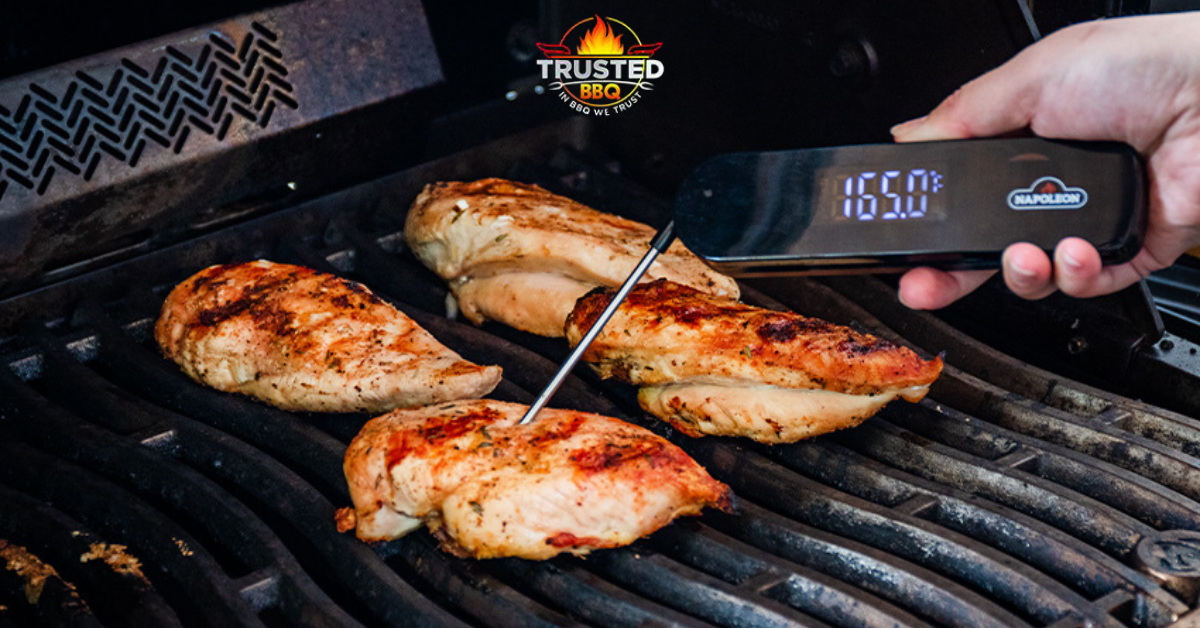Okay, let’s be honest: grilling isn’t just throwing meat on a hot surface and hoping for the best. That might work if you’re lucky, but if you’re aiming for that perfectly seared steak or slow-smoked ribs that fall off the bone, then, friend, you’re gonna have to talk heat control.
It’s the unsung hero of grilling. People love to obsess over what cut of meat to buy, what rub or marinade to use, or how long to cook something, but what’s behind the heat? That’s the game-changer. Today, we’re pulling back the curtain on airflow, vent design, and BTUs and how these three things can make or break your backyard BBQ.
And yes, we’ll include some examples from Trusted BBQ’s lineup to demonstrate what this looks like when done right.
First Things First: What Is Heat Control, Really?
Heat control is the ability to manage the temperature of your grill with a certain level of accuracy. Whether you’re searing burgers at 500°F or smoking brisket low and slow at 225°F, you need to control the flames like a backyard wizard.
Think of it like this: your grill is the instrument, and heat control is the tuning. Without it, your food’s just noise.
Airflow: The Grill’s Breath of Life
So here’s the deal: your fire requires air. Attempting to run a marathon with a clothespin on your nose is like trying to start a fire without airflow. Things won’t end nicely.
Controlling the airflow is crucial for maintaining the temperature of a charcoal barbecue. The flames will get bigger if you open the vents all the way. If you close them too much, you’ll put out the fire before it ever starts.
Now, take Trusted BBQ’s Portable Charcoal BBQ Grill, for example. What makes it a total gem for backyard chefs is its dual-vent design. You’ve got adjustable vents both at the bottom and the lid. That means you can control not just how much air gets in but also how the smoke and heat exit, essentially creating a mini convection oven. Handy when you’re trying to get that slow-roasted perfection.
Pro tip? Start with the bottom vents open to get things going, then tweak the top vent to maintain the sweet spot.
Vent Design: Not All Grills Are Created Equal
Some grills try to be fancy with multiple knobs and gadgets but fall short where it counts: the vents. Good vent design isn’t about looks. It’s about balance. You want even heat distribution, the ability to adjust with precision, and solid construction that doesn’t warp after a few uses.
Let’s take a look at the 3-burner Stainless Steel Propane Gas Grill from Trusted BBQ. This grill features front-facing control knobs and side vents that not only look sleek but also effectively channel heat across the entire grill bed. No more hot zones on one side and lukewarm chicken on the other.
The lid also seals tight when closed, which traps heat efficiently. Paired with side vents that can be adjusted, it’s like having a volume dial for your flames. Do you want medium heat? Boom. Do you want to blast it for a quick char? Done. It responds like a charm.
BTUs: What the Heck Do They Mean?
You’ve probably seen “BTUs” thrown around on product listings like some secret code. It stands for British Thermal Units, a unit of measurement for heat energy. More specifically, how much energy your grill can produce per hour.
Now, more BTUs don’t always mean “better.” That’s where people get tripped up. A poorly insulated grill with a high BTU rating is like a leaky faucet blasting water everywhere. It’s wasting energy.
That’s why Trusted BBQ’s Charcoal Grill with Offset Smoker doesn’t chase big numbers for the show. Instead, it utilizes heavy-duty steel construction and a well-designed framework to hold and circulate heat efficiently. Even if you’re burning fewer coals or running it at lower BTUs, the results are still solid, and your meat stays moist without the need for constant flipping and poking.
Gas vs. Charcoal: Two Different Heat Personalities
Gas grills provide quick, consistent heat with the turn of a knob, making them great for weeknight dinners or last-minute get-togethers. But they depend heavily on BTU output and vent design.
Charcoal grills offer a more hands-on experience. They provide that smoky flavor and temperature versatility, but only if you understand how to control the airflow and manage your coal placement.
One’s not better than the other; it’s like choosing between a sports car and a vintage truck. Trusted BBQ carries both types, and the best part is that you can find options that hit the sweet spot, no matter your style.
A Little Science Goes a Long Way
Getting good at heat control isn’t about memorizing a bunch of numbers or trying to be some grill scientist? It’s about paying attention to how your grill responds when you tweak something.
- Did opening that vent make your flames spike?
- Did closing the lid keep things juicier?
- Are the BTUs on your burner overkill for a thin cut of fish?
Just experiment. Burn a few hot dogs in the process. It’s part of the fun.
Final Thoughts: Your Grill Should Work With You
Here’s the truth: great grilling is less about gadgets and more about understanding your tools. A well-built grill (like the ones Trusted BBQ puts out) gives you the features you need to control heat with confidence. The rest is just practice, patience, and maybe a cold drink while you wait.
So next time someone asks you the secret to your killer BBQ, you can tell ‘em it’s not just the rub. It’s the airflow, the vents, and those sneaky little BTUs doing their thing behind the scenes.
And hey, if your grill isn’t quite cutting it, you know where to look. Trusted BBQs have your back.




